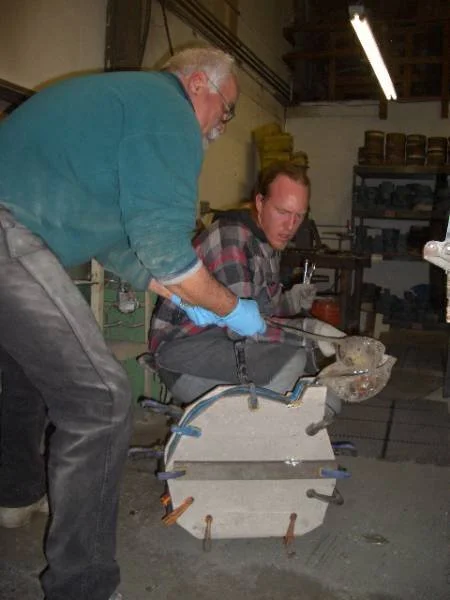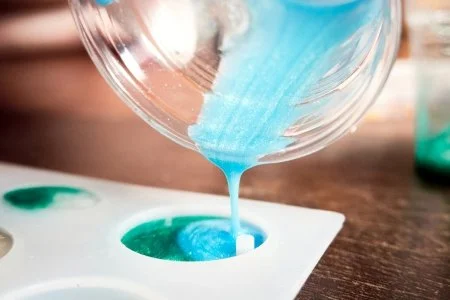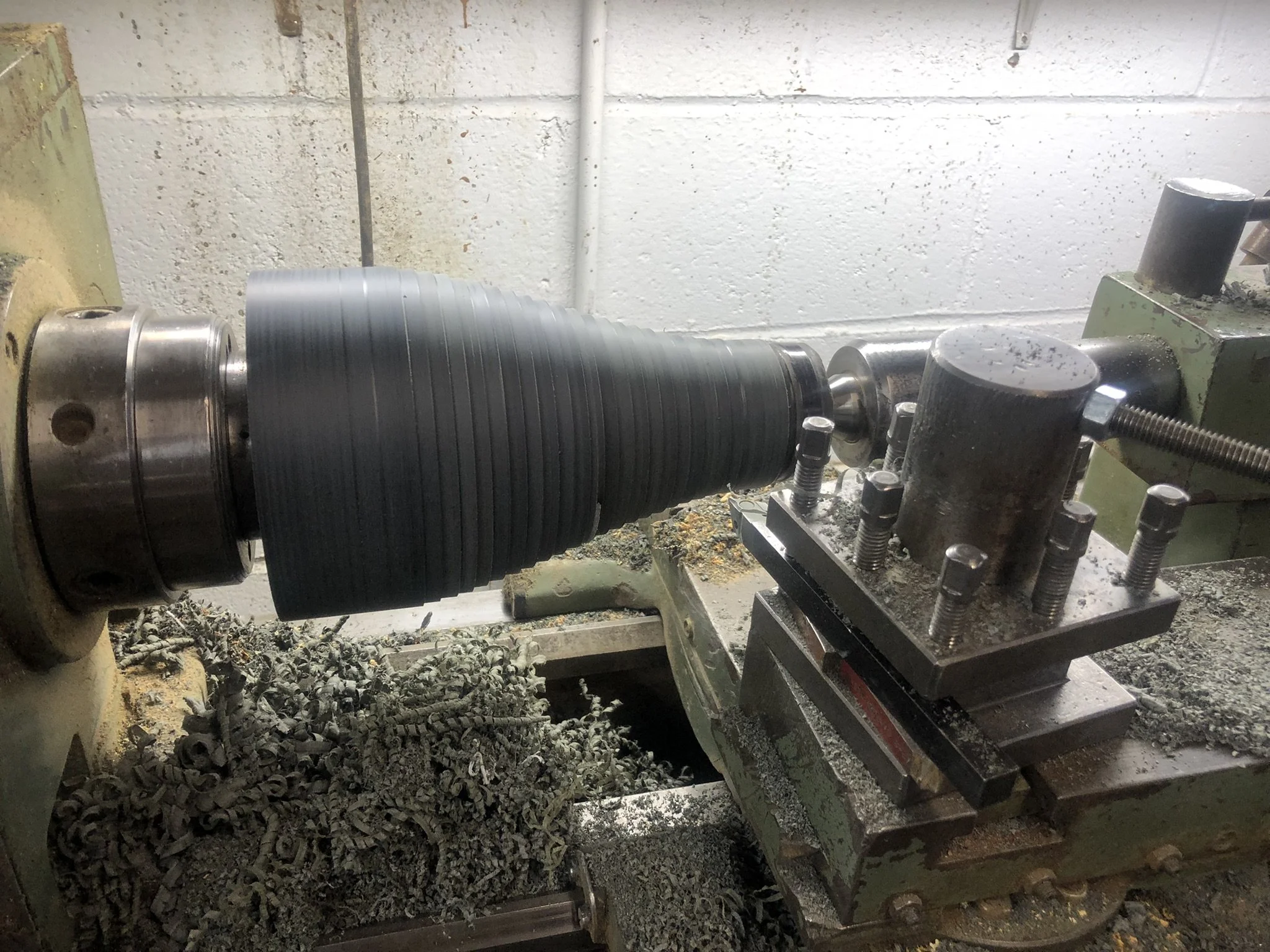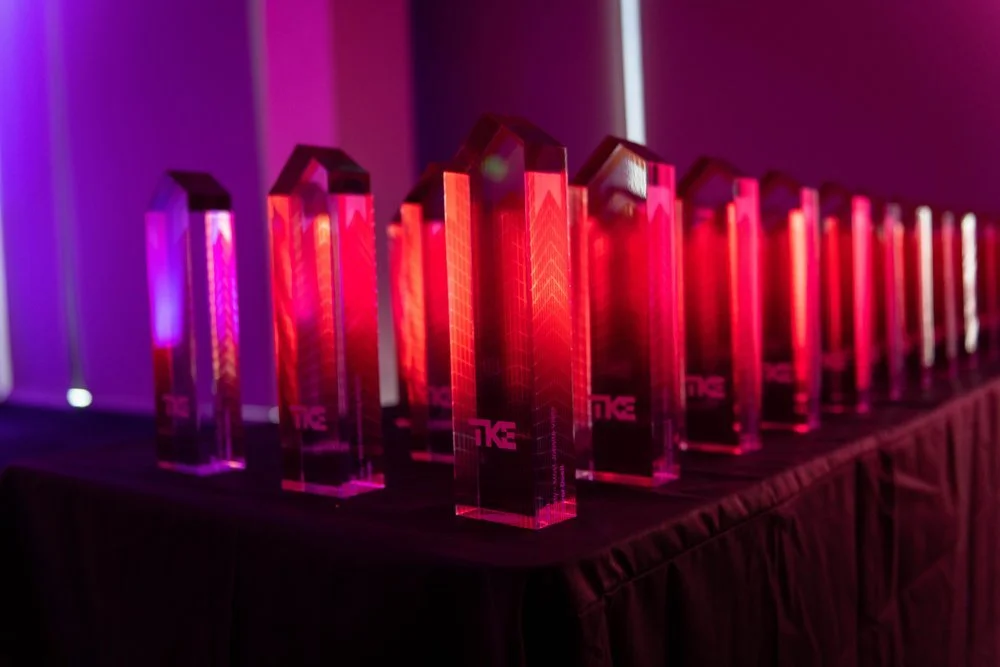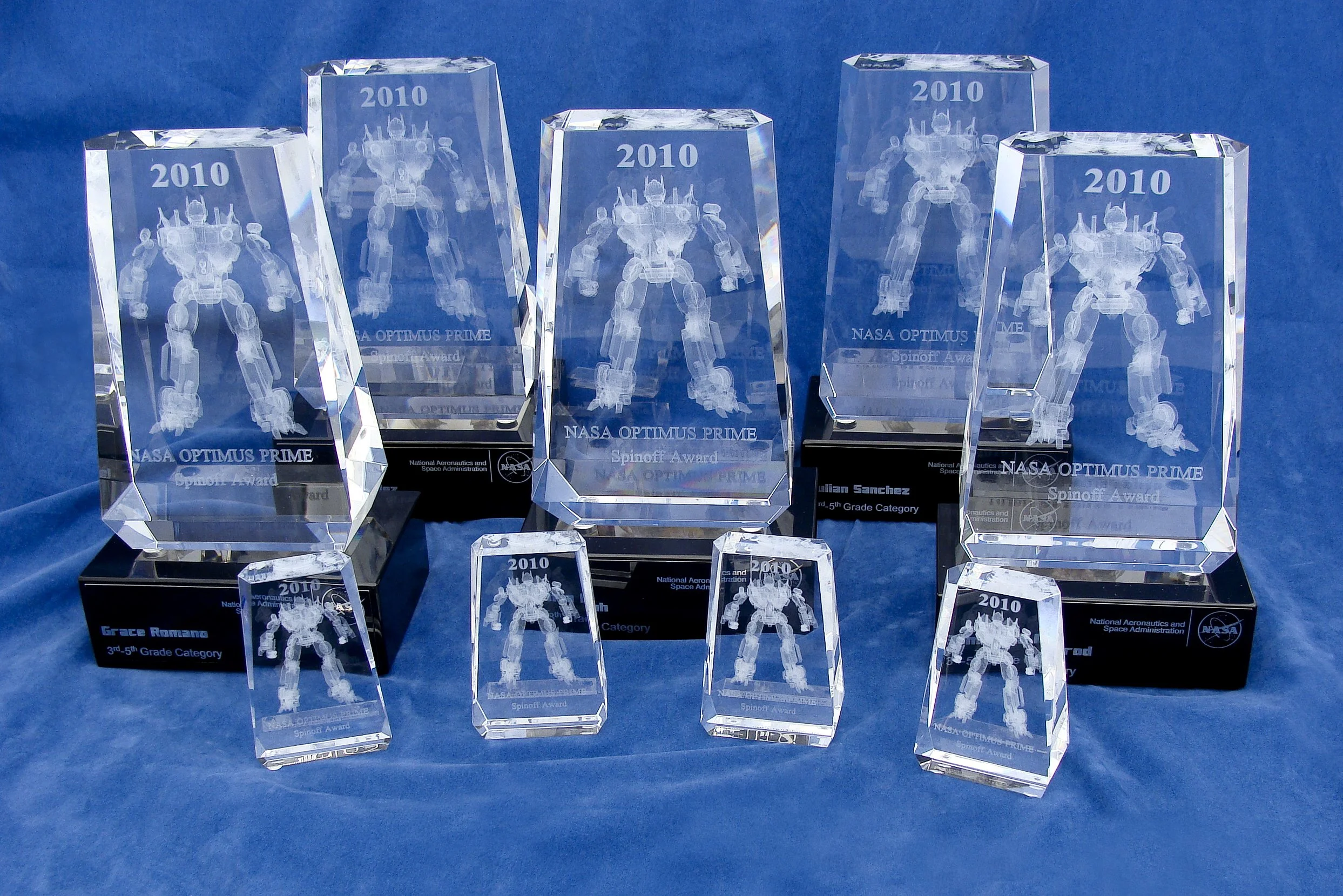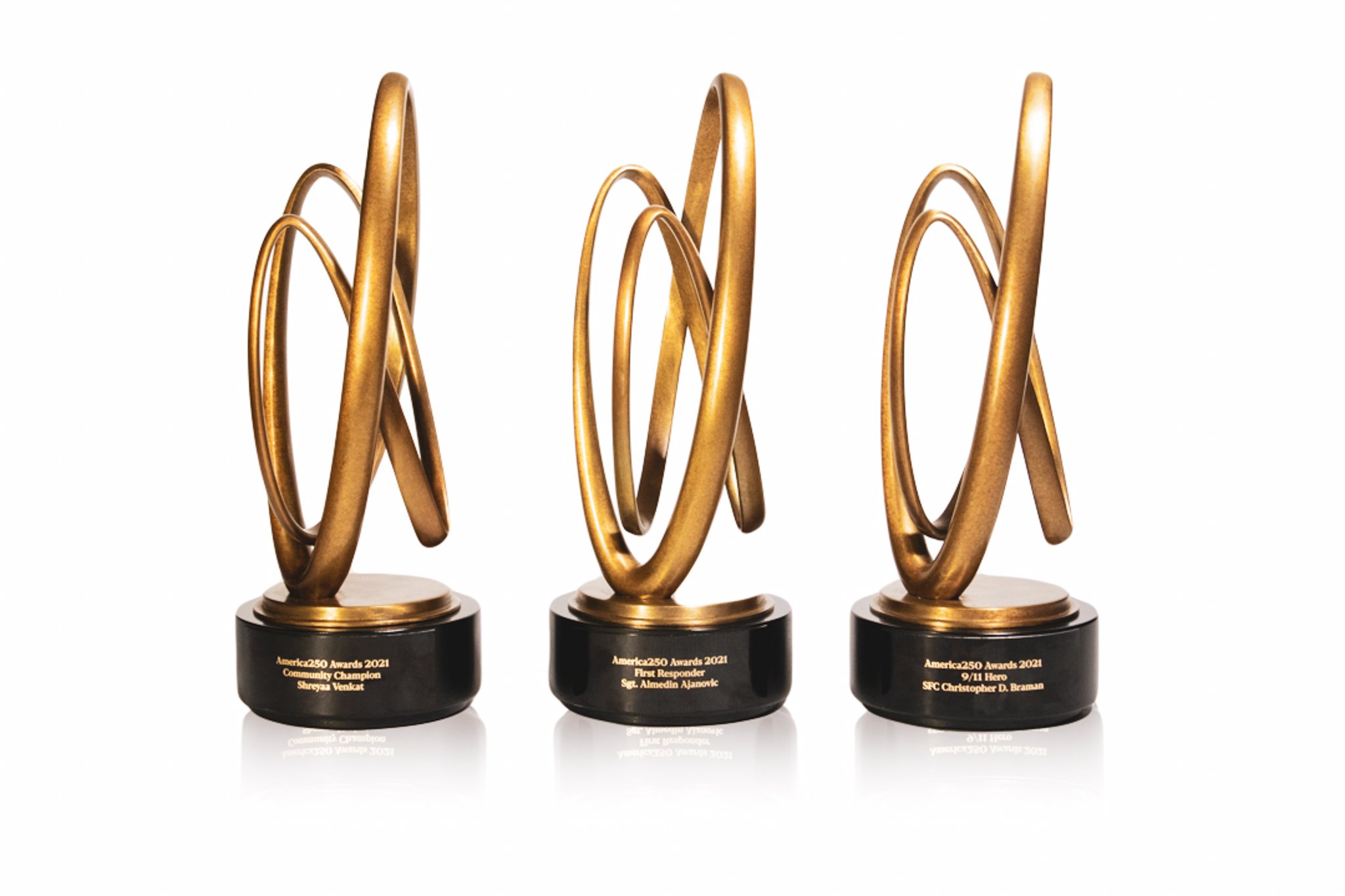
HOW IT'S MADE
How We Produce Your Awards
The processes we use to produce your awards vary depending on the type of award we are producing. For each of the production processes we employ, we use state-of-the-art technology and equipment, leading edge process flows, and the finest raw materials available. Some of the production processes we frequently use are outlined below.
Lost Wax Casting
Lost wax casting is typically used for the cast sculpture awards that we create in bronze. The initial step in this process is to create an original model. This model is typically hand sculptured from clay or wax, or 3D from a digital design created using CAD software. The completed model is then used to create a silicon rubber mold with an open cavity in the shape of the original model. Next, wax is melted and poured the mold’s cavity. Once the wax hardens, it is removed from the mold, and it is now a 3D wax sculpture (called a replica) in the shape of the original model. This wax is then coated in a ceramic shell (called investment). Next, this ceramic shell is put in a hot kiln and the wax is burned out (melted and drained – hence the name lost wax casting), leaving yet another hollow cavity in the shape of the award – this time in the ceramic shell. Bronze ingots are then heated until they are molten (liquid), and this molten bronze is poured into the cavity of the ceramic shell. Once the bronze has cooled and is hard, the ceramic shell is broken away from the bronze, leaving a 3D bronze sculpture in the form of the award. The bronze is cleaned up and finished (either high polished or patinaed), and the process can start again. Examples of our custom cast sculpture awards can be viewed here: Cast Sculpture Awards
PMMA Casting
PMMA casting is similar to the bronze casting process described above, with a few important differences. A CAD design file is used to 3D print an original model from PMMA (a thermoplastic material called polymethyl methacrylate). Unlike the original models in lost wax casting, these models are used to directly create the investment shell, bypassing the wax mold and replica steps described above. This saves the time and cost associated with these steps; however, in this process, a new PMMA model must be created for each final sculpture award that is produced. The remaining steps of the process are the same as those with lost wax casting described above (after the wax-related steps). Examples of our custom cast sculpture awards can be viewed here: Cast Sculpture Awards
Spin (Centrifugal) Casting
Spin casting (also called centrifugal casting) is most often used to create pewter sculpture awards. The spin casting process is a hybrid of the lost wax and PMMA casting processes. An original model is created (as above, using clay, wax or 3D printing), and then this model is used to create a silicon rubber mold. However, here is where the process diverges from the other casting processes. Pewter is a softer metal than bronze, and melts at a much lower temperature. One implication of this is that pewter can be melted and poured directly into the rubber mold, bypassing the wax steps. A spin-casting machine is used so that centrifugal force pushes the molten metal into all the open spaces of the mold cavity. All remaining steps of the casting process (post wax-related) are similar to those of lost wax and PMMA casting. Our custom cast sculpture awards can be viewed at: Cast Sculpture Awards
Resin Casting
Casting awards in resin follows a very similar process to the spin casting process associated with pewter sculptures. An original model is created, generally from clay or wax. Once the model is complete, and coated with a release agent, a silicon rubber mold is created surrounding the model. The model is then extracted, leaving an open cavity in the rubber mold in the shape of the award. Resin is mixed and then poured into the mold cavity. The resin is allowed to cure (cool and harden), and is then extracted from the mold. As a final step, the resin sculpture award can be finished (usually painted or plated) to achieve the desired final look. For more information on resin awards, see: Resin Awards
Die Casting
Die casting is usually used to produce a large quantity of awards made from zinc, aluminum, or other steel alloys. There is a high upfront cost to create (tool) the metal mold required for this process, but the per-unit cost of each award produced is generally less than cast awards. The first step in die casting is to create a digital 3D design of the award using CAD software, which is then used to create a digital design of the mold required to produce this award. Next, this CAD design file is used by CNC (Computer Numerical Control) machines to cut out the mold cavity (in the shape of the award) from a block of steel. This step of the process is called tooling. Molten metal is then injected into this cavity using very high pressure. Once the metal cools and hardens, it can be extracted from the mold, and then finished (e.g., sandblasted, bead blasted, anodized, painted, or polished) to achieve the desired final look. Examples of our custom cast sculpture awards can be viewed here: Cast Sculpture Awards
CNC Machining
Unlike our cast awards, awards machined in metal are produced one at a time directly from the metal itself – there is no physical model or mold used in the production process. Some of the processes used as part of this production method include CNC Machining, CNC Turning, Wire EDM Machining and Waterjet Cutting. We deploy sophisticated CNC (Computer Numerical Control) machines as the foundation of tis process. CNC machines are automated machines that are used to cut, shape, and drill various materials such as metal, wood, and plastic. These machines use a computer program to control the movement and operation of the cutting tools. Bennett Awards has continued to stay on the leading edge of CNC technology to deliver the best possible results for our clients. We utilize some of the best multi-axis mills available, and use some of the world’s most advanced materials, which, in combination, deliver unmatched fidelity with super tight tolerances. The net result of this is some of the highest quality metal awards available.
The first step in creating a machined metal award is to create the design of the award in digital form using CAD software. This design file is then converted to a CNC program using CAM (computer-aided manufacturing) software, and then uploaded to the CNC machine. Next, the material the award will be created from is mounted on the CNC machine’s worktable. After various parameters are dialed in, including speed and feed ate, the program is run on the machine, and award is cut from the metal on the worktable. The completed award can then be inspected and finished in a variety of finishes, including sandblasting, bead blasting, anodizing, painting, and polishing. Examples of our machined metal awards can be viewed at: Machined Metal Awards
Fabrication
Fabrication covers a broad spectrum of production processes, depending on the award design, award material, and quantity produced. From a high-level perspective, fabrication involves hand-crafting awards one award at a time. A variety of tradecrafts fall under this umbrella, including metalcraft (sawing, grinding, bending, welding, spinning, extrusion, stamping, etc.), woodworking (carving, sawing, cutting, sanding, staining, etc.), silversmithing, and glassblowing. While these are all considered handcrafted processes, sophisticated machinery is often deployed as part of this production methodology. For example, fabricating metal awards may involve using CNC machines, lasers, waterjets, lathes, and milling machines.
Many of the custom fabricated awards we produce require precise measurements, so, in these cases, the design files used to guide production may need to be prepared using CAD (computer-aided design) software. Other designs may be of a more organic, free-form nature, and hand-drawn images or sketches may work fine as the guide for these fabricated awards. Examples of our fabricated awards can be viewed at: Fabricated Awards
3D Printing / Additive Manufacturing
3D printing has become an important process in our arsenal. Initially, the design of an award or object is created in digital form using CAD software.Next, this design file is uploaded to a 3D printer, much like sending a digital document to a paper printer. The 3D printer then creates a 3D sculpture based on the design file provided. The 3D printer can create this sculpture using a variety of materials, including nylon, resin, plastic, and wood, as well as a broad array of metal alloys, including steel, titanium, and precious metals. 3D printing, and additive manufacturing in general, can be used as part of the custom award design and creation process in a few different ways:
Model Creation: 3D printing can be used to create models. These models, like hand sculpted models, can then be used for the purposes of casting awards.
Embedded Objects: 3D printing can be used to create objects which can then be embedded in acrylic.
Final Award Production: 3D printing can be used to directly create final awards. These sculptures are generally created from a durable polymer material and then painted to achieve the desired finish. Recently, though, 3D printing directly in metal has emerged as a viable alternative and will continue to gain prominence as we move into the future. 3D printed metal awards can be finished in a variety of ways, including polishing, plating, anodizing, and patination.
The two key potential advantages of 3D printing versus other production process are lower overall costs and shorter production timelines. More information on 3D printed awards can be found at: 3D Printed Awards
Wood Award Production
The wood awards we create can take an almost endless variety of shapes and sizes, so there really is no one process used to create our wood awards. The techniques we use can range from hand carving to employing a variety of sophisticated woodworking machines. These machines can include a spectrum of differ types of saws, CNC routers, lathes, drill presses, planers, sanders, and jigs. The designs used to create these awards can range from rough sketches or paper-based mockups (typical for hand carving) all through sophisticated digital models created using CAD software (typical for CNC machining). Examples of our wood awards can be viewed at: Wood Awards
Acrylic Award Production
Acrylic sometimes called Lucite (a DuPont brand name) or plexiglass. The production process for acrylic awards shares some similarities with other casting processes, but there are distinct differences. To start, a design of the award is created using graphic design software. This design is then used to create a mold, usually out of metal or cardboard. Next, acrylic casting resin (in a form like pancake batter) is poured into the cavity of the mold. Acrylic is clear by nature, so color may be added to the acrylic as part of this step. A variety of colors can be used, and the transparency of the acrylic can range from fully transparent to fully opaque. Another potential ingredient in this stage of the process is to embed a solid object within the body of the acrylic sculpture, such that the object appears to be floating – this is called “embedment”. Once these steps are complete, and mold is placed in an oven and heated. Once the resin cools and hardens, it is extracted from the mold, and the award can be decorated and personalized. This can take the form of direct laser engraving into the surface of the award, digital printing on the surface of the award, or some combination of the two. Examples of our custom acrylic awards can be viewed at: Acrylic Awards
Crystal Award Production
As with all award production processes, the first step in creating crystal awards is the creation of a design using graphic design or CAD software. This design is used as the guide to cut the desired shape of the award out of a block (or sheet) of crystal. Once the crystal shape is cut and polished, it is ready for decoration and personalization. There are multiple ways in which the crystal award can be decorated and personalized. The first option is to laser engrave a 3D image inside the body of the crystal, such that the image appears to be “floating” inside the award. This process is called “sub-surface engraving”. A second option is to engrave images or text on the outer surface of the award. This can be done via either laser engraving or sandblasting. A third option is to digitally print color images or text on the surface of the award. These can be printed on the front of the award, or, alternatively, on the back surface of the award, so the image can be viewed through the transparent award itself. A combination of these techniques can also be used on a single award. For more information and examples of crystal awards see: Crystal Awards
Glass Award Production
Much like wood awards, glass awards can take such a broad variety of forms and styles that there is not one single methodology used to create glass awards. Glass awards are typically made using either glassblowing or glass casting. In glassblowing, a skilled artisan glassblower uses a blowpipe to gather molten glass from a furnace and then shapes it into the desired form using tools and techniques such as blowing, shaping, and annealing. The glass is then cooled slowly in a kiln to relieve any internal stresses and prevent it from shattering. In glass casting, the molten glass is poured into a mold and left to cool and harden. The mold is typically made of plaster, sand, or graphite, and is designed to give the glass its desired shape. Once the glass has been formed and cooled, it is then polished, and it is now ready for personalization. Personalization can be done on the glass award itself using sandblasting or laser etching/engraving. The text and/or images appear “frosted” on the surface of the glass. Personalization can also be achieved using digital printing on the surface of the glass, although this is not as common. Finally, the glass sculpture itself can be left “pure”, or clean or decoration, and personalization can be incorporated on the base that this glass sculpture is mounted to.
Let’s Get Started!
This should give you an idea of the breadth of processes, technologies, and machinery we use to create our awards. This scope enables us to recommend the perfect approach for your award project, rather than trying to shoehorn things into a singular award style or production process that may not be the best fit for your project. We look forward to hearing about your award ideas and requirements, and recommending the best possible approach for your needs!



